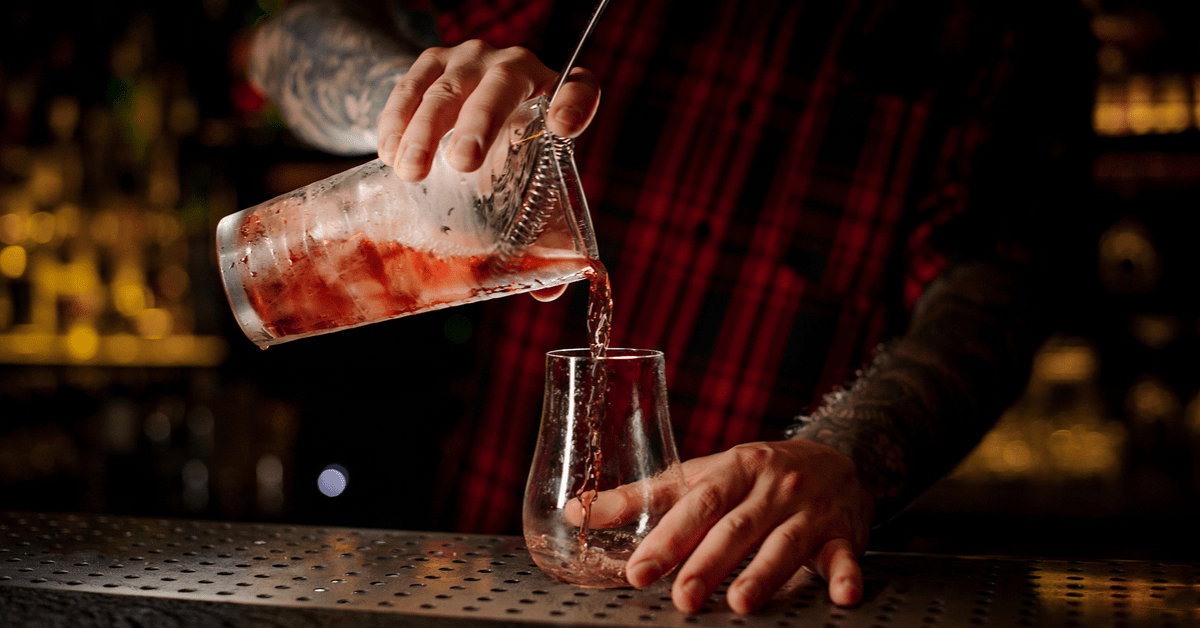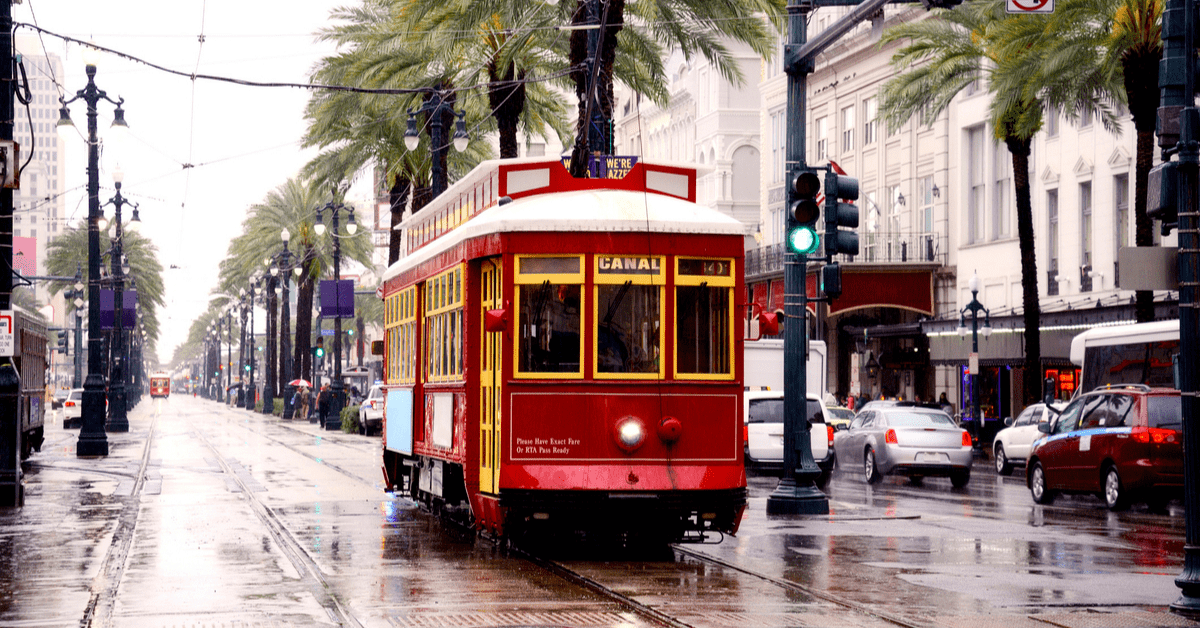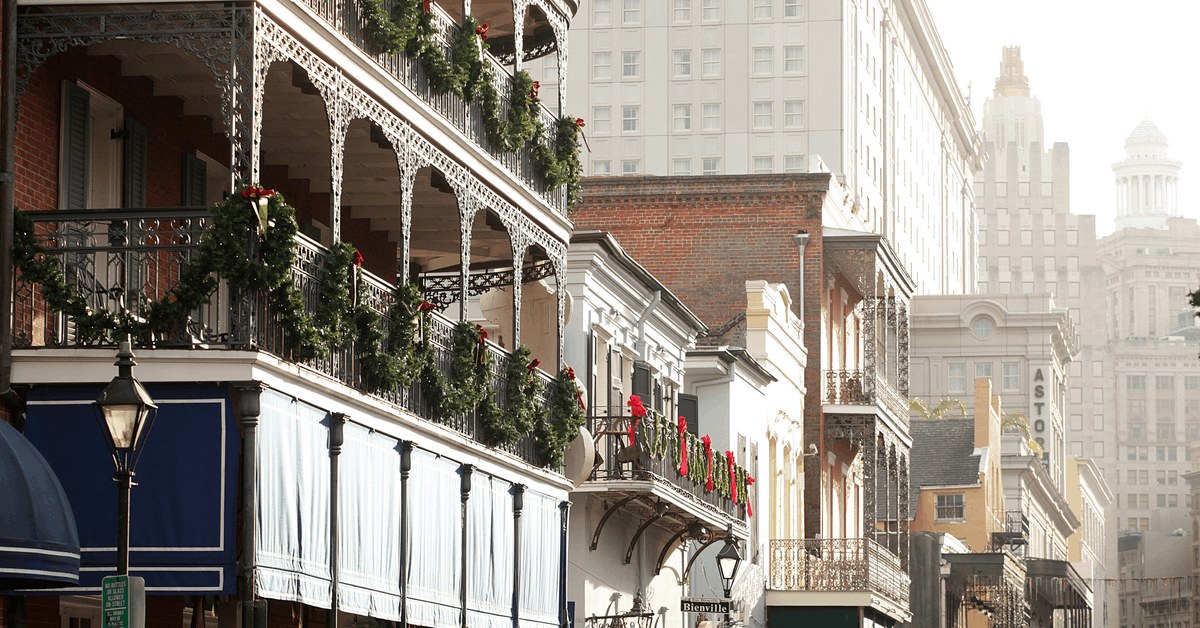The Sazerac, created in New Orleans, may have been the world’s first cocktail and is a favorite among whiskey drinkers.

The original Sazerac was made with an imported French cognac that gave it its name: Sazerac de Forge et Fils. In the late 19th-century, when the phylloxera epidemic wiped out whole swathes of French vineyards thus reducing cognac supplies, bartenders substituted American rye whiskey and the Sazerac that we know today was born. In the U.S., the Sazerac is thought of primarily as a whiskey cocktail, although some bartenders use the original cognac recipe.
What is a Sazerac?
The official recipe for a Sazerac, according to the International Bartenders Association, still uses 5cl of cognac as the main spirit, along with 1cl of absinthe, a sugar cube, and two dashes of Peychaud’s Bitters. Served in an Old-Fashioned glass, the drink offers an intriguing taste, with spiciness from the rye whiskey base, a sweetness from the sugar cube, and herbal notes from the bitters.
For many, the Sazerac is their go-to cocktail when looking down a menu, for others, it’s a tried-it-once kind of a cocktail. As with any cocktail, there are numerous variations, but only one place that it calls home: New Orleans.
The beginnings of the Sazerac
In the mid-19th century, a man named Antoine Amedee Peychaud, the son of a Haitian immigrant, ran a pharmacy in the French Quarter. Among the tonics and remedies he sold were some medicinal bitters that he produced himself and called Peychaud’s Bitters. Legend has it that Peychaud enjoyed making cocktails with his bitters, and one particular favorite combined them with the imported French Sazerac cognac. He served these drinks in an egg-cup, a coquetier in French, which some say is where the word cocktail may have originated.
Makings of the Sazerac Company
It’s believed a local bar owner, Aaron Bird, somehow knew about Peychaud’s cocktail, and adapted it for sale in his bar. No-one knows for sure if he or Peychaud – or indeed someone who worked for Bird – created the recipe that endures and named it the Sazerac. Bird made it his signature cocktail, though, and renamed his bar The Sazerac House. It was the beginning of what was to become today’s million-dollar Sazerac Company, which owns several distilleries across the U.S. and Canada, most notably the famous Buffalo Trace.
A streetcar named desire

The New Orleans French Quarter in the mid to late-19th century would have been largely recognizable to the present-day visitor. The brick buildings with their ornate wrought-iron balconies were already present, though there would have been more regular shops for the people who lived there, rather than the many bars and souvenir shops that cater to tourists today.
There would have been one significant difference, though, and that’s New Orleans’s famous streetcars. In 1831, the first streetcar ran in New Orleans, making it the second city in the U.S. to introduce them, after New York. Several companies set up businesses to meet the demand for this fast form of public transport, and soon there were routes crisscrossing the city, including within the French Quarter and out further into the suburbs.
Sadly the most famous streetcar named Desire – because it had its final stop, Desire, on the destination board at the front – ended in 1948, to be replaced by a bus service. There are five streetcar lines still in operation, including the popular St Charles Avenue line, which is now the oldest continuously-operating streetcar line in the world.
If you’re staying in the French Quarter you can catch the streetcar at Stop 0, at the junction of Carondelet and Canal Streets. It’s a good way to get out to the Trouro District and catch a slice of the real New Orleans life along the way. In Touro, Magazine Street has developed into a fashionable district of boutiques, galleries, shops, and fine restaurants, including the multi-award-winning Shaya, one of the best dining experiences in the city, if you can get a table.
Where to enjoy a Sazerac
The Sazerac House
This museum and cocktail experience, which opened in October, is spread across three floors in two historic buildings and dives deeper into the history of the Sazerac and New Orleans spirits more generally. There’ll also be the chance to try the Sazerac version of what a Sazerac truly is as the company is once again importing cognac from Sazerac de Forge & Fils, which inspired the original cocktail.
Museum of the American Cocktail
Located within the Southern Food and Beverage Museum, this museum not only has a bar serving cocktails, you can wander around and see the exhibits on the history of American cocktails with a Sazerac in your hand.
The Sazerac Bar
Proving that New Orleans can be refined as well as rowdy, The Sazerac Bar was recently voted Best Hotel Bar in the U.S. This beautiful art deco bar has chandeliers and murals by artist Paul Nunes, who lived in New Orleans for many years.
Other New Orleans cocktails
New Orleans always was, and always will be, a melting pot of a city that welcomes all cultures, all cuisines, and indeed all spirits. The Sazerac is only one of several cocktails invented in New Orleans, which you can still enjoy all over the city today.

Ramos Gin Fizz
The Gin Fizz has been around for a while but Henry Ramos gave his own distinct twist to it, creating the Ramos Gin Fizz at his bar, the Imperial Cabinet Saloon, in 1888. The basic Gin Fizz is gin, lemon juice, sugar, and carbonated water, to give the drink its fizz.
Ramos turned a simple cocktail into a much more elaborate creation, involving egg white and orange flower water. He also added cream and lime juice, and replaced the carbonated water with soda water. The result was a rich, thick, and creamy drink, a little like a gin milkshake but with citrus and the gin botanicals swirling around in it. He served it in a tall Collins glass.
Some people like to add a slice of orange to complement the orange flower water. Be warned that when made from scratch, the drink takes several minutes to prepare, though it’s an entertaining performance to watch.
The Hurricane
The Hurricane was invented during World War II at Pat O’Brien’s bar, which is still there today on St Peter Street in the French Quarter. It originally opened in 1933 at a different address, but in 1942 moved to its present building. During the war, O’Brien was forced by spirits distributors to take large stocks of rum that were flooding the market, before he could order more desirable drinks like whiskey, which was in short supply.
He wanted to get rid of the rum so put together this powerful drink, which uses several types of rum, passion-fruit syrup, and lemon juice, with a cherry and a slice of orange as garnish. The bright red result was served in a glass that looked like a hurricane lamp, hence the name. Along with the Sazerac, it’s one of the city’s most popular cocktails.
Absinthe Frappé
Yet another New Orleans cocktail creation, this cocktail was invented in 1874 at the Old Absinthe House on Bourbon Street, which is still going strong, having first opened in 1807. The walls are filled with photos, business cards, and notes from celebrities who have visited over the years, going back to General Andrew Jackson in 1812 (though he didn’t leave a business card).
The drink combines absinthe, simple syrup, soda, mint leaves, lemon juice and blends it with ice. It is served in a frappe glass, garnished with mint leaves and a slice of lemon or lime.



